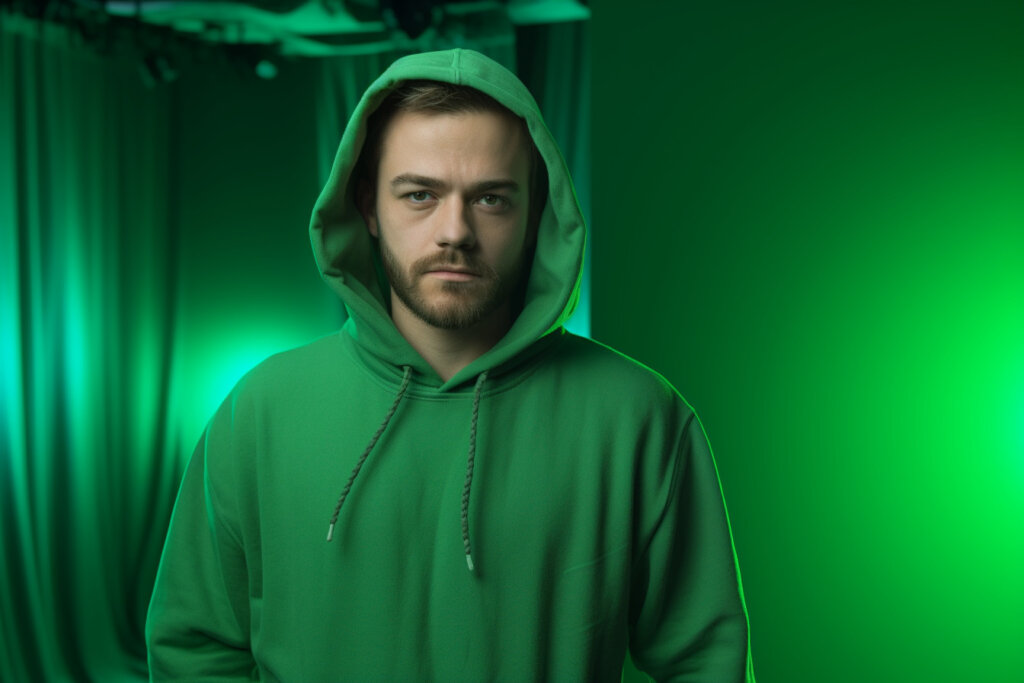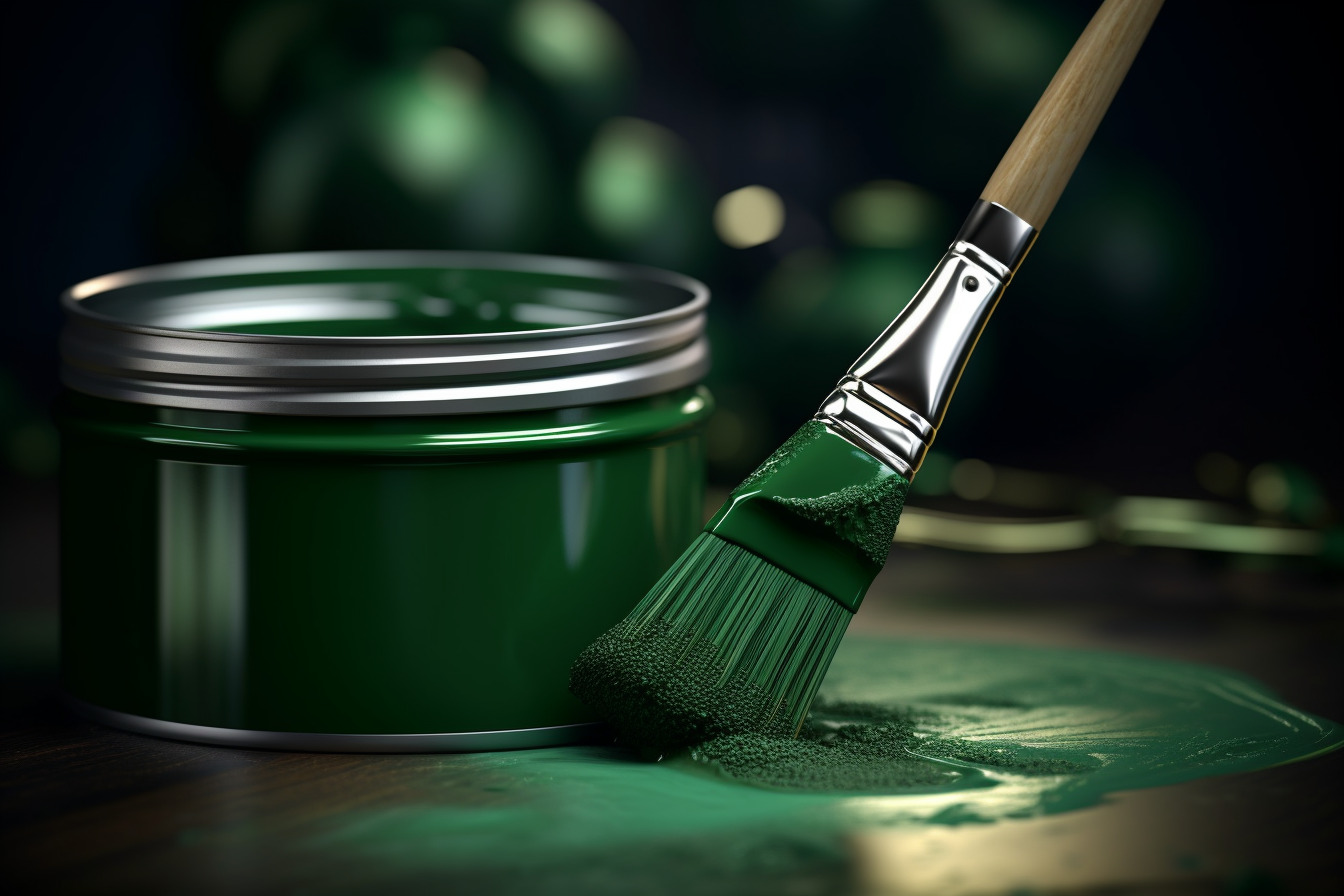Importance of Visual Effects in Digital Content
Visual effects play a huge role in making digital content more interesting and engaging. They help tell stories in movies, TV shows, YouTube videos, and more by creating cool backgrounds and special effects. Because of this, having awesome visual effects can make your content stand out and keep your audience entertained.
Benefits of Green Screen Technology and DIY Approach for Budget-Conscious Creators
Green screen technology is a powerful tool that can help you create amazing visual effects without spending too much money. It works by replacing a green background with any image or video you want. This means you can make it look like you’re in a different place, or even create magical worlds! By learning how to create your own green screen, you can save money and have fun making unique videos and photos, even if you’re on a tight budget.
What is a Green Screen?
Definition and Purpose
A green screen is a special background made of a bright green color, which is used when filming videos or taking photos. The purpose of a green screen is to make it easy for computer software to remove the green background and replace it with any other image or video. This technique is called “chroma keying” and lets you create cool visual effects without having to build expensive sets or travel to different locations.
Applications in Various Industries
- Film and Television: Green screens are used a lot in movies and TV shows to create special effects, like making it look like characters are flying or putting them in imaginary worlds. This helps filmmakers save money and time while still making their stories exciting and believable.
- Photography: Photographers can use green screens to change the background of their photos, like putting people in front of famous landmarks or creating fantasy scenes. This can be great for portraits, wedding photos, and more.
- Live Streaming and Video Games: Streamers and gamers often use green screens to make their videos more interesting. They can remove the background of their room and replace it with gameplay footage or cool graphics. This helps them stand out and keeps viewers engaged.
- Educational and Corporate Presentations: Teachers and businesses can use green screens to create engaging presentations. They can appear in front of educational slides, charts, or even create virtual tours. This helps make learning and presentations more fun and memorable.
Choosing the Right Materials for Your Green Screen
Fabric Options
- Muslin: Muslin is a lightweight and affordable fabric often used for green screens. It’s easy to work with, but make sure it’s thick enough so light doesn’t pass through. You’ll also need to iron out wrinkles, as they can cause problems when using the green screen.
- Polyester: Polyester is another good choice for green screens because it’s wrinkle-resistant and easy to clean. It’s a little more expensive than muslin, but its durability makes it a great investment.
- Painted Canvas: Instead of using fabric, you can also paint a canvas or a wall with special green screen paint. This option is more permanent and can provide a smooth, even surface, but it can be more expensive than using fabric.
Comparing Costs and Durability
When choosing a green screen material, consider both the cost and durability. Muslin is the cheapest option but may need more maintenance due to wrinkles. Polyester is more durable and wrinkle-resistant, making it a better long-term choice. Painted canvas can be the most expensive option but provides a smooth surface and is very durable.
Where to Purchase Materials
- Online Retailers: You can find green screen materials on online stores like Amazon, eBay, or specialized websites for photo and video equipment. Shopping online can be convenient and often offers a wider variety of choices.
- Local Fabric Stores: Visiting a local fabric store is another option. You can see and feel the materials in person, which can help you make the best decision for your needs. Just make sure to choose a bright, even green color that will work well for chroma keying.
Setting Up Your DIY Green Screen
Selecting the Ideal Location
- Indoor vs. Outdoor Setups: Indoor setups are usually better for green screens because you can control the lighting more easily. However, if you want to film outdoors, make sure it’s a cloudy day to avoid harsh sunlight and shadows.
- Space Requirements and Considerations: Choose a location with enough space for your green screen, lighting equipment, and your camera setup. Make sure the area is free from clutter, and there is room for you to move around in front of the screen.
Properly Mounting and Stretching the Screen
- Tension System: To avoid wrinkles and sagging, you’ll need to stretch your green screen evenly. You can use a tension system with clips or hooks to pull the fabric tight in all four corners.
- Standalone Frame or Wall-Mounted: You can either mount your green screen on a standalone frame, which can be moved around easily, or attach it to a wall. Both options work well, so choose the one that fits your needs and space the best.
Lighting Tips
- Natural vs. Artificial Lighting: Artificial lighting is best for green screens because it gives you more control over the light. Natural light can change throughout the day and create unwanted shadows, making it harder to get good results.
- Avoiding Shadows and Hotspots: To get the best results, you’ll need to light your green screen evenly without creating shadows or bright spots. Position your lights so they’re angled at the screen and not directly pointing at it.
- Three-Point Lighting Setup: Use a three-point lighting setup to light yourself and the green screen. This includes a key light (the main light), a fill light (to soften shadows), and a backlight (to separate you from the background). This setup will help you achieve professional-looking results.
Filming Techniques for Optimal Green Screen Results

Camera Settings and Considerations
- Resolution and Frame Rate: Choose a high resolution and frame rate for your camera to capture clear, smooth footage. High resolution will help with better keying, and a higher frame rate will reduce motion blur, which can cause problems when removing the green screen.
- Focus and Depth of Field: Make sure you and the green screen are in focus to get the best results. Adjust the depth of field so that you’re sharp, and the green screen is evenly lit. This will make it easier to remove the green background later.
- Camera Placement and Angles: Position your camera at a good distance from you and the green screen. This helps reduce shadows and ensures the whole screen is in the shot. Experiment with different angles to find the most effective and creative shots for your project.
Wardrobe and Props
- Avoiding Green and Reflective Materials: Don’t wear green clothing or use green props, as they will become invisible when you remove the green screen. Also, avoid wearing reflective materials, as they can cause color spill and make keying more difficult.
- Selecting Contrasting Colors: Wear colors that contrast with the green screen so you stand out and are easy to separate from the background. Bright, solid colors usually work best.
- Practical vs. CGI Props: You can use real props in your scene or add them later using computer-generated imagery (CGI). Practical props can make your scene feel more realistic, while CGI props give you more flexibility and control over the final result. Choose the approach that works best for your project.
Keying and Compositing: Bringing Your Visual Effects to Life
Understanding Chroma Keying
- Color Sampling: Chroma keying is the process of removing a specific color (like green) from your video or photo. The software samples the green color in your footage and removes it, allowing you to replace the background with a different image or video.
- Color Spill and Suppression: Color spill happens when the green color from the screen reflects onto your subject, making it harder to separate them from the background. You can use the spill suppression tools in your software to reduce this issue and create a clean key.
Fine-Tuning Your Key
- Edge Refinement: After removing the green screen, you might notice rough edges around your subject. To fix this, you can use edge refinement tools in your software to smooth out the edges and make your subject blend seamlessly with the new background.
- Masking and Rotoscoping: Sometimes, the chroma keying process doesn’t remove all the green or leaves unwanted parts of the background. You can use masking and rotoscoping techniques to manually remove these areas and get a perfect result.
Integrating Background Elements
- Matching Lighting and Perspective: To make your new background look realistic, you need to match the lighting and perspective of your subject. Adjust the lighting, shadows, and position of your subject in the new background to create a natural and believable scene.
- Blending and Motion Tracking: Blending tools help you combine your subject and the new background smoothly. If your subject moves in the scene, use motion tracking to ensure the background moves accordingly, making the final result more convincing.
Tips for Troubleshooting Common Green Screen Issues
Uneven Lighting
- Identifying Problem Areas: Uneven lighting on your green screen can cause issues when keying out the background. Look for dark spots, bright spots, or shadows on the screen, which can make it harder for the software to remove the green color.
- Adjusting Lighting Setup: To fix uneven lighting, reposition your lights to create a more even distribution across the green screen. Make sure the lights are angled toward the screen and not pointing directly at it. You can also add diffusers to soften the light and reduce harsh shadows.
Color Spill
- Reducing Reflectivity: Color spill occurs when green light from the screen reflects onto your subject. To reduce this issue, move your subject further away from the green screen and adjust the angle of your lights to minimize reflections.
- Adjusting Software Settings: Use the spill suppression tools in your green screen software to remove color spill from your subject. These tools can help you get a cleaner key and make your subject blend better with the new background.
Motion Blur and Artifacting
- Shutter Speed Adjustments: Motion blur can cause issues when removing the green screen, especially if your subject is moving quickly. To reduce motion blur, increase your camera’s shutter speed to capture sharper, more detailed images.
- Rotoscoping Techniques: If you’re still having trouble with motion blur or artifacting after adjusting your camera settings, you can use rotoscoping techniques in your editing software. Rotoscoping involves manually tracing around your subject frame by frame, which can help you create a cleaner key even when motion blur is present.
Conclusion
In this guide, we covered the essentials of DIY green screen mastery for budget-conscious creators. From selecting materials and setting up your green screen to filming techniques, keying, and compositing, you can create stunning visual effects to make your digital content stand out. Mastering green screen technology takes time, practice, and patience, so continue experimenting with different setups, lighting techniques, and software tools to find what works best for you.
As you gain more experience, you’ll become more confident in your ability to create amazing visual effects with your DIY green screen. We encourage you to share your creations and success stories to inspire others on their green screen journey. Together, we can learn from each other and continue to grow our skills in the world of visual effects.










